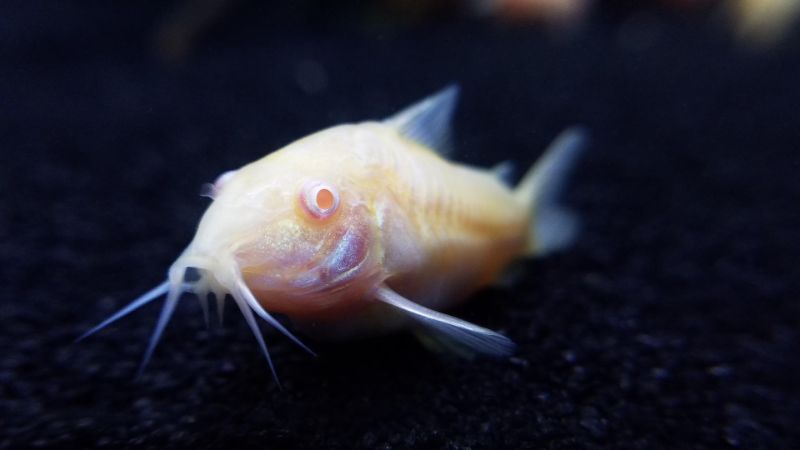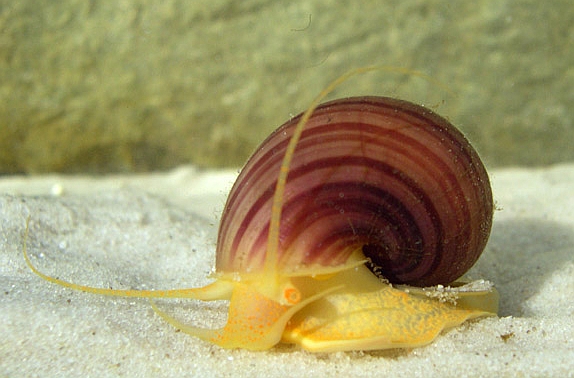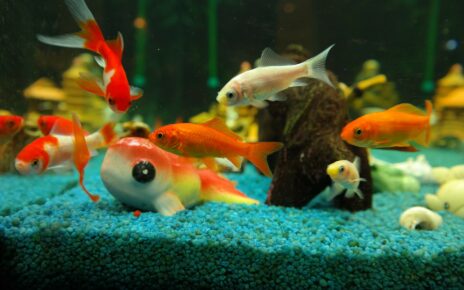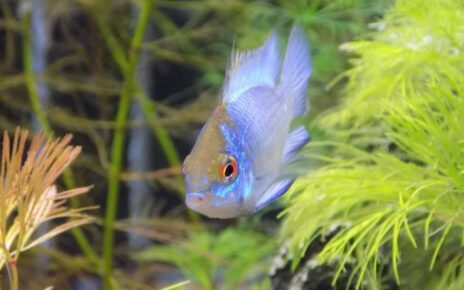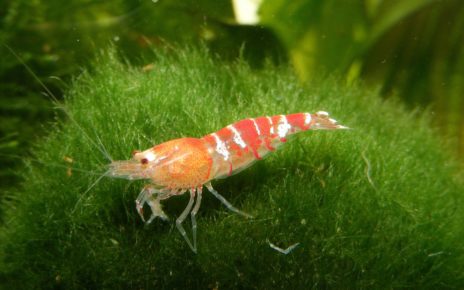On this page, you’ll find the best fish for cleaning the bottom of a tank. We’ll also provide information on caring for these fish and what types of tanks they are best suited for. So, if you are looking for a way to keep your tank clean without doing any extra work, be sure to read on!
Best Fish for Cleaning The Bottom Of A Tank
Cory Catfish
Cory Catfish (Buy Online) are one of the best choices for cleaning the bottom of a tank. These hardy fish are easy to care for and have a peaceful temperament, making them an excellent addition to most community tanks. In addition, corys are omnivores, so they will eat a variety of foods, including algae and detritus.
These active fish are also constantly on the move, scouring the substrate for food. Best of all, Cory catfish remain small, only reaching a maximum size of 2.5 inches, and they are a perfect choice for any aquarium over 20-gallons.
Bristlenose Pleco
The Bushy Nose Pleco (Buy Online) is an excellent choice for helping to keep the bottom of your fish tank clean. This pleco is a peaceful, easy to care for fish that originates from South America. It has a brown or red coloration along with its signature spiky nose.
The Bushy Nose Pleco is an omnivore, meaning that it will eat both plants and meat. In terms of tank maintenance, this pleco is especially helpful because it will consume leftover food and algae.
It is important to note that the Bushy Nose Pleco will grow to be 6 inches and needs to be kept in at least a 30-gallon tank with driftwood if possible.
Kuhli Loach
Kuhli loaches (Buy Online) are small, eel-like fish that make excellent tank mates for a wide variety of community fish. Kuhlis are peaceful and shy by nature, and they will often spend their days hiding among the plants and rocks in your aquarium. In addition to their attractive appearance, kuhlis are also great cleaners, spending much of their time foraging for bits of food that have sunk to the bottom of the tank. As a result, kuhlis can help to keep your aquarium clean and free of debris.
Kuhlis are native to Southeast Asia and can be found in a variety of colors, including red, tan, and black. They typically grow to be 4-5 inches in length and do well in tanks that are at least 50 gallons in size. And Kuhlis prefer water that is slightly acidic with a temperature range of 79-86 degrees Fahrenheit.
Clown Loach
Clown loaches (Buy Online) are one of the best fish for cleaning the bottom of a tank. They originate from Indonesia and can grow up to 1 foot long. They are semi-aggressive, and they can hold their own against other large, aggressive fish. Clown loaches are also very active, so they need a tank that is at least 100 gallons.
Clown loaches are also Omnivores, so they will eat just about anything, and they are active scavengers that will help keep the bottom of your tank clean and free of debris. Plus, these fish are also known to help control nuisance populations of snails as well.
Malaysian Trumpet Snail
Malaysian Trumpet Snails (Buy Online) are one of the best snail species to clean the bottom of a freshwater tank. MTS are peaceful, unique in appearance with their conical shell, and they will reproduce rapidly. Malaysian Trumpet Snails are also safe for planted tanks, and they spend most of their time burrowing in the substrate in search of food. We recommend a minimum tank size of 3 – 5 gallons for Malaysian Trumpet Snails with temperature parameters of 72° – 86° F (22° – 30° C), pH of 6.5 – 7.6, and KH of 3 – 12 dKH.
Otocinclus Catfish
Otocinclus Catfish (Buy Online) are some of the best fish for keeping a fish tank clean. They are peaceful in temperament, and their tan coloration makes them unobtrusive. Otocinclus Catfish are also herbivores, so they will not disturb other tank inhabitants while grazing on algae. They prefer water conditions that are on the cooler side, with a pH between 6.8 and 7.5. Otocinclus Catfish are relatively small, only growing to be 4 inches in size, and do well in smaller tanks (10+ gallons)
Zebra Loach
Zebra Loaches (Buy Online) are one of the best fish you can get for cleaning the bottom of your tank. They have a vivid black pattern over their gold body coloration that is simply stunning, and they are incredibly inquisitive and active fish that almost never stops swimming and foraging. Zebra Loaches are also adaptable to a wide range of water parameters, so you don’t have to worry about them getting sick if something changes with your tank. Plus, they make an excellent addition to a planted tank.
Zebra Pleco
Zebra plecos (Buy Online) are one of the best fish for cleaning the bottom of a tank. These black and white fish are peaceful by nature and can get along with most other tank mates. Zebra plecos are omnivores, so they will eat almost anything you give them. They particularly like algae, though, so if you have a problem with algae growth in your tank, a zebra pleco will make short work of unsightly algae.
Zebra plecos are easy to care for and can thrive in a wide range of water conditions. They do best in tanks with low lighting, however, so if you have a brightly lit tank, then they may not be the best choice for you. Zebra plecos can grow up to 3 1/2 inches in length, so be sure your tank is at least 30 gallons before getting one of these fish.
Twig Catfish
The Twig Catfish (Buy Online) is a peaceful, black, and tan fish that makes an excellent addition to any tank. These hardy little fish are peaceful and easy to care for, and they do an excellent job of eating algae and other debris.
They’re a relatively small fish, maxing out at around six inches in length, and these fish do best in tanks that are at least 50 gallons in size, and they should be kept with other peaceful fish species. Overall, Twig Catfish are an excellent choice for anyone looking for a bottom-dwelling fish that can help keep their tank clean.
Bumblebee Goby
The Bumblebee Goby (Buy Online) is a small, black, and yellow fish that makes an excellent addition to any tank. These peaceful fish are known for their ability to clean the bottom of a tank, and they will help to keep your tank looking neat and tidy. Bumblebee Gobies are also relatively easy to care for, and they can thrive in a wide range of water conditions. And since they only reach a maximum size of 1 1/2 inches, these little fish are also perfect for smaller tanks.
Yoyo Loach
Yoyo loaches (Buy Online) are a popular choice for aquariums because of their dynamic nature and vibrant colors. They grow to be about 6 inches long and are black, white, and yellow in color. Yoyo loaches are omnivores, so they will eat both plants and animals. They are also good at cleaning the bottom of the tank since they tend to spend a lot of time swimming near the substrate. Yoyo loaches do best in tanks that are at least 30 gallons in size, with water that is 72-86 degrees Fahrenheit and a pH of 6.0-7.5.
Synodontis Catfish
Synodontis Catfish (Buy Online) are a popular choice for aquariums because of their docile nature and striking appearance. These bottom-dwellers are native to Africa, where they inhabit rivers and lakes. Synodontis Catfish are semi-aggressive, so they should not be kept with smaller fish that they might view as prey. They are also known to be fin nippers, so it’s best to keep them with fish that have similarly sized fins.
Synodontis catfish prefer water with a temperature of 75-82 degrees Fahrenheit and a pH of 6.5-7.5. They are omnivores, and their diet should include both meaty and plant-based foods. Synodontis catfish grow to be about 8 inches long, so they need a minimum tank size of 50 gallons. And these hardy fish are relatively easy to care for, making them a good choice for beginner aquarists.
Cherry Shrimp
Cherry Shrimp (Buy Online) are one of the most popular invertebrates in the aquarium trade, and it’s easy to see why. These beautiful creatures come in a range of colors, from bright red to deep burgundy, and they are relatively easy to care for. Cherry Shrimp are peaceful by nature, and they make an ideal addition to any community tank. They are also excellent cleaners, feeding on algae and other detritus that can accumulate on the bottom of a tank.
Tiger Shovelnose Catfish
The Tiger Shovelnose Catfish (Buy Online) is a popular choice for those looking for a bottom-dwelling fish that can help keep their tank clean. These hardy fish are native to South America and are known for their aggressive temperament. They are very active bottom-feeding fish that love picking up large morsels of food and debris. However, just be aware that Tiger Shovelnose Catfish grow to be quite large (3.5 feet), so they require a minimum tank size of 180 gallons, and they have a lifespan of 10-15 years.
Crayfish
Crayfish (Buy Online) are interesting, unique creatures that make a great addition to almost any aquarium. They are relatively easy to care for, and their active personality can add a lot of enjoyment to your tank.
Crayfish are also very effective at cleaning the bottom of your tank. They are constantly scavenging for food and will quickly consume any leftover fish food or organic debris. As a result, they can help to keep your tank clean and free of excess ammonia and nitrates.
It is important to provide plenty of hiding places for these shy creatures, as they are often bullied by other tank inhabitants. Crayfish are also known to be escape artists, so be sure to choose a tank with a tight-fitting lid.
Chinese Algae Eater
The Chinese Algae Eater (Buy Online) is a popular choice for aquarium enthusiasts looking for a fish that can help keep their tank clean. As its name suggests, this fish originates from China and is known for its voracious appetite for algae. In addition to algae, the Chinese Algae Eater will also consume any leftover fish food, which helps to keep the tank clean and free of debris. Although it is classified as a semi-aggressive species, the Chinese Algae Eater
is generally peaceful when it is younger and can be kept with other fish of similar size and temperament.
Redtail Catfish
The Redtail Catfish (Buy Online) are large semi-aggressive fish and have an omnivorous diet, which means they will consume both plant and animal matter. Redtail Catfish are also relatively easy to care for and can grow up to 3′ 4″ in size. While they require a minimum tank size of 250 gallons, they are peaceful tank mates and can coexist with other monster fish species.
Nerite Snail
Nerite Snails (Buy Online) are one of the best types of snails for cleaning the bottom of a tank. Plus, they do not reproduce in freshwater, so you don’t have to worry about them taking over your aquarium.
Nerite Snails are also safe to keep with plants, and they are completely peaceful. They have a wide temperature tolerance and can live in tanks with a pH of 6.4 to 8.0.
Nerite Snails can live on algae and debris alone if there is enough present in their tank, but their diet can also be supplemented with algae wafers or vegetables.
Mystery Snail
The Mystery Snail (Buy Online) is a popular choice for aquariums for a variety of reasons. In addition to their beautiful yellow coloration, Mystery Snails are easy to care for and peaceful in temperament. Mystery Snails are also excellent cleaners and will spend hours grazing on algae and detritus that has collected on the bottom of the tank.
Apple Snail
Apple Snails (Buy Online) are one of the best options for cleaning the bottom of a large tank. They are adaptable to a wide range of pH and hardness levels, and they reach a maximum size of 1-2 inches. Apple Snails are also very efficient at eating leftover food and eliminating waste. In addition, they are relatively low-maintenance and can live for several years with proper care. As a result, Apple Snails make an excellent choice for anyone looking for a helpful and long-lasting bottom-dweller.
How Do I Keep The Bottom Of My Fish Tank Clean?
Maintaining a clean tank is important for the health of your fish and the stability of your water quality. There are a few different ways to accomplish this, and the best method may vary depending on the size and type of your tank.
One common way to clean the bottom of a tank is to use a Python Gravel Vacuum (Buy Online), which is a tool that sucks up debris from the gravel while also draining some of the water. This method can be effective, but it can also be time-consuming and stressful for fish.
Another option is to add bottom-feeding fish or snails to your tank. These animals will help to eat up detritus, keeping the bottom of the tank clean.
Finally, ensuring good water circulation can also help to keep the bottom of the tank clean by preventing waste from settling in one area. By following these tips, you can help to keep your tank clean and healthy.
What Are The Best Bottom Feeding Fish?
- Cory Catfish
- Bristlenose Pleco
- Kuhli Loach
- Clown Loach
- Zebra Loach
- Zebra Pleco
- Twig Catfish
- Bumblebee Goby
- Yoyo Loach
- Synodontis Catfish
- Tiger Shovelnose Catfish
- Chinese Algae Eater
- Redtail Catfish
What Fish Can Clean Gravel?
Bristlenose Plecos are one of the best bottom-feeding fish because they help keep algae and debris under control. They are also active at night, so they won’t bother other fish during the day. Plus, they’re peaceful and easy to care for.

